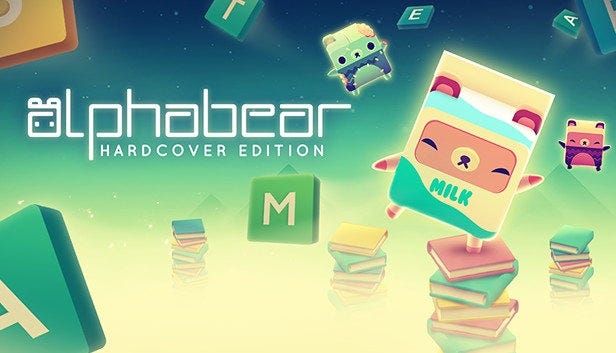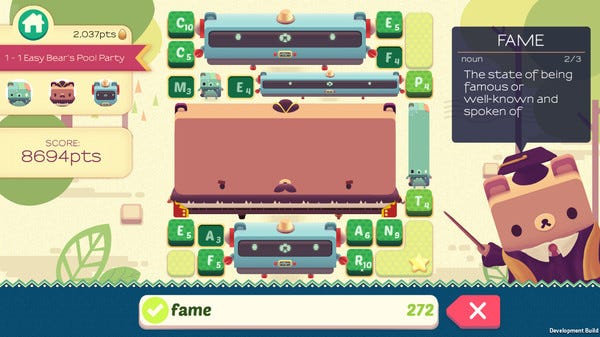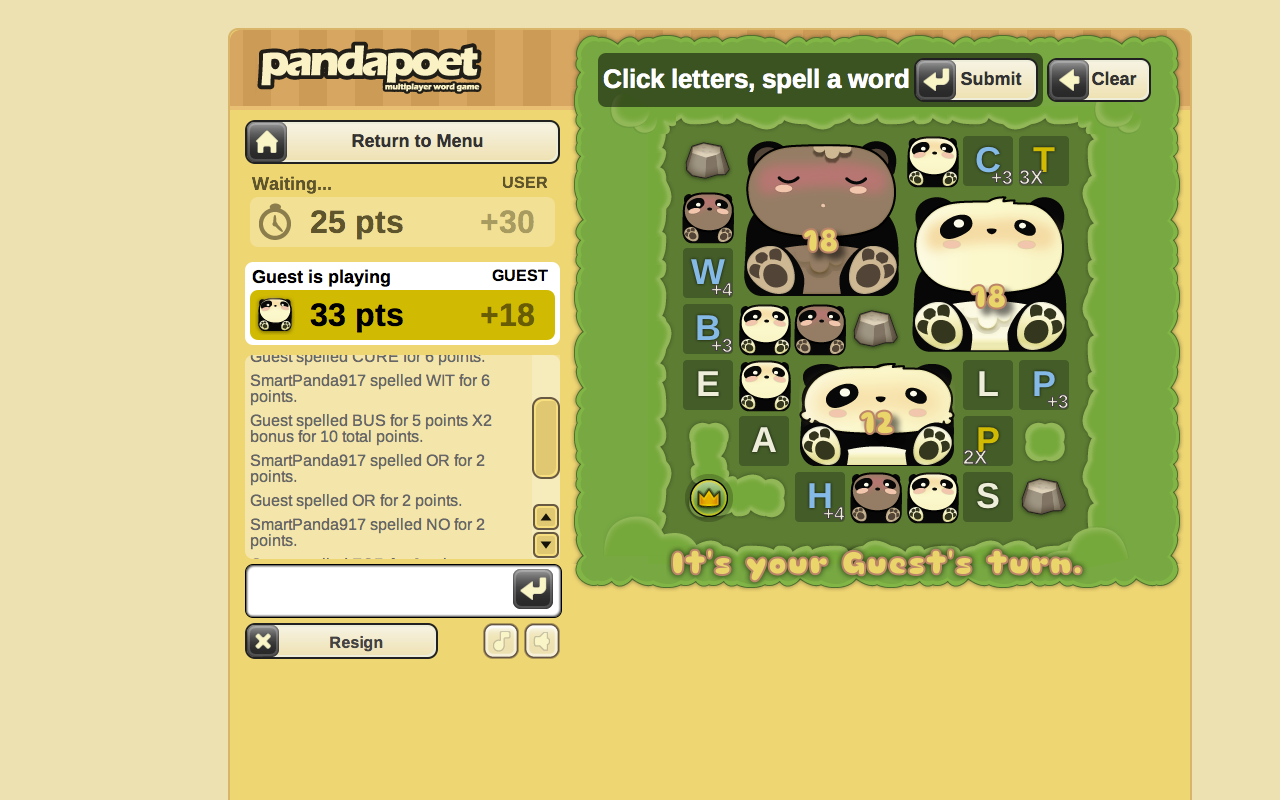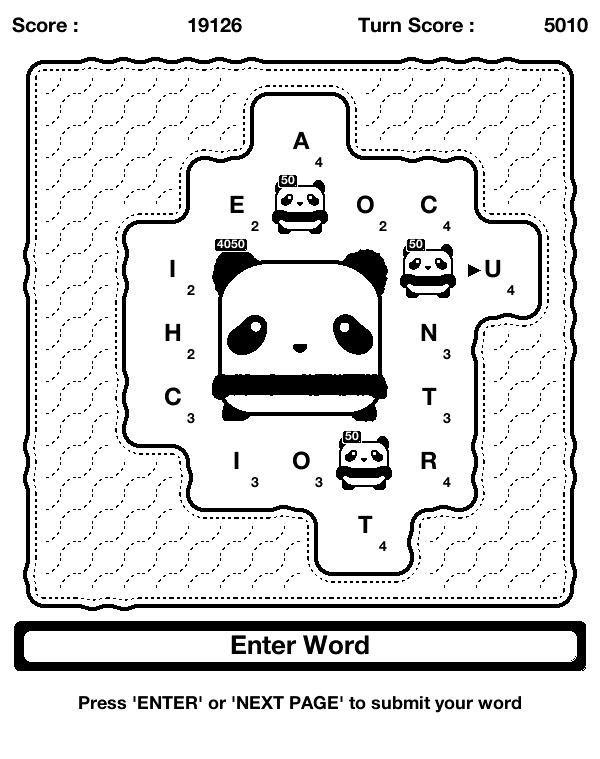Trending
Opinion: How will Project 2025 impact game developers?
The Heritage Foundation's manifesto for the possible next administration could do great harm to many, including large portions of the game development community.
The strength of the Biggest Bear mechanic is evident. While the different versions of the game vary their metagame, platform and even number of players, the biggest bear mechanic remains constant. It is core to what makes these games enjoyable.

Hello and welcome to Game Design Inspirations! GDI is a weekly bite-sized nugget of brilliant game design, taken from the games that I play “for research purposes”.
A game in Alphabear: Hardcover Edition begins with you being given a set of letters. You use these letters to form words, with each adjacent letter used merging together to form a cute and oftentimes weirdly proportioned bear.

The main goal of each stage is reach a certain score. I find that when I play the game though, the score is usually an afterthought. What I really want to do is to make the biggest bear possible. So satisfying!
 The biggest bear mechanic isn’t unique to Alphabear : Hardcover Edition — it actually started out in one of Spry Fox’s older games, Panda Poet, and is a constant across Alphabear on all platforms.
The biggest bear mechanic isn’t unique to Alphabear : Hardcover Edition — it actually started out in one of Spry Fox’s older games, Panda Poet, and is a constant across Alphabear on all platforms.

The strength of the mechanic is evident. While the different versions of the game vary their metagame, platform and even number of players, the biggest bear mechanic remains constant. It is core to what makes these games enjoyable.

Spry Fox games have always been my go-to sources for game design inspiration. Daniel Cook’s Lost Garden Site and his Chemistry of Game Design article shaped my mental model of what makes games compelling. I’ve always admired his scientific approach to game design, and its effectiveness truly shows in most of Spry Fox’s games (See also: Triple Town, the pioneer of the Merge-3 Genre popularized by Threes and 2048).

In Alphabear: Hardcover Edition though, the fun core mechanic is diluted by the weaker metagame. The loss of f2p mechanics, while something that some players like, may actually lead to less retention.
Scott Rigby and Richard Ryan’s research on player motivation had one very important guideline when giving rewards:
[Player rewards] are most motivating when they specifically enhance the player’s experience of competence, autonomy and relatedness
Being a heavily skill/competence based-game, Alphabear’s collectible bears would have been more rewarding if they allowed the player to enhance the skill they practice the most: forming words and (to me at least!) making bigger bears.
Rather than just providing higher scores, maybe some bears, for example, could change letters on the board. Perhaps there could be bears that allow the player to reveal unopened letters and use them. There could also be bears that remove the annoying rocks that block the player from making the biggest bear they could. Not being able to completely fill the board with a big bear really riles me up!

These don’t stop the game from being enormously fun though. Recent game design trends have focused more on the metagame — D30 retention, gacha, experience grinding and appointment mechanics are almost expected. Even without taking the metagame into account, Spry Fox has already succeeded in crafting an experience that stands the test of time.
Today’s moment of Zen:
Autonomy is not satisfied by the act of choosing….The act of decorating your desk is not autonomy, that’s just fun… Autonomy is when you return to your desk the next day, and you see the things on your desk and you say, “Ahh. I Exist.” — Jason VandenBerghe in his essential Engines of Play GDC 2016 talk
Thank you for reading! Follow Game Design Inspirations on Medium for weekly and past GDIs.
Read more about:
BlogsYou May Also Like